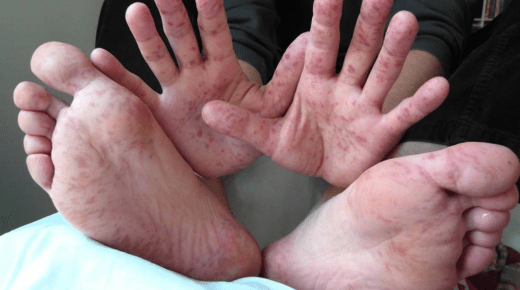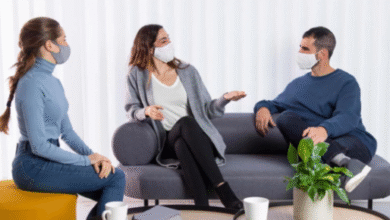
Chickenpox and Hand, Foot, and Mouth Disease (HFMD) are two common viral infections that primarily affect children. While they share some similarities, they are caused by different viruses and have distinct symptoms and treatments.
1. Causes of Chickenpox
Chickenpox is caused by the varicella-zoster virus (VZV), a member of the herpes virus family.
2. Causes of Hand, Foot, and Mouth Disease
HFMD is caused by various strains of enterovirus, most commonly coxsackievirus A16.
3. Transmission of Chickenpox
Chickenpox spreads through respiratory droplets or direct contact with the fluid from the blisters of an infected person.
4. Transmission of Hand, Foot, and Mouth Disease
HFMD spreads through close personal contact, coughing, sneezing, or contact with contaminated surfaces.
5. Incubation Period of Chickenpox
The incubation period for chickenpox is typically 10 to 21 days after exposure.
6. Incubation Period of Hand, Foot, and Mouth Disease
HFMD has a shorter incubation period, usually between 3 to 6 days after exposure.
7. Symptoms of Chickenpox
Symptoms of chickenpox include a red rash, itching, fever, fatigue, and loss of appetite.
8. Symptoms of Hand, Foot, and Mouth Disease
HFMD presents with a fever, sore throat, and characteristic rash or blisters on the hands, feet, and mouth.
9. Complications of Chickenpox
Complications of chickenpox can include bacterial infections of the skin, pneumonia, encephalitis, or even death in severe cases.
10. Complications of Hand, Foot, and Mouth Disease
While rare, complications of HFMD can include viral meningitis, encephalitis, or myocarditis.
11. Treatment for Chickenpox
Treatment for chickenpox focuses on relieving symptoms, such as using antihistamines for itching and fever reducers for temperature control.
12. Treatment for Hand, Foot, and Mouth Disease
There is no specific treatment for HFMD, but over-the-counter medications can help alleviate symptoms like fever and discomfort.
13. Prevention of Chickenpox
Vaccination is the best way to prevent chickenpox, with the varicella vaccine being highly effective.
14. Prevention of Hand, Foot, and Mouth Disease
Practicing good hygiene, such as frequent handwashing, can help prevent the spread of HFMD.
15. Contagious Period of Chickenpox
Chickenpox is contagious from about 1 to 2 days before the rash appears until all blisters have crusted over.
16. Contagious Period of Hand, Foot, and Mouth Disease
HFMD is most contagious during the first week of illness but can remain contagious until the symptoms disappear.
17. Diagnosis of Chickenpox
Chickenpox is typically diagnosed based on the characteristic rash and other symptoms.
18. Diagnosis of Hand, Foot, and Mouth Disease
Diagnosis of HFMD is also based on clinical symptoms, such as the presence of characteristic lesions.
19. Impact on Children
Both chickenpox and HFMD can cause discomfort and distress in children, leading to missed school days and disrupted routines.
20. Seasonality
Chickenpox cases tend to peak in the late winter and early spring, while HFMD is more common in the summer and fall.
21. Immunity After Infection
After recovering from chickenpox, individuals usually develop lifelong immunity to the virus.
22. Immunity After Infection with HFMD
Immunity to HFMD after infection is temporary and may not prevent future infections.
23. Global Burden
Chickenpox vaccination programs have significantly reduced the global burden of the disease, especially in countries with routine immunization.
24. Global Impact of Hand, Foot, and Mouth Disease
HFMD remains a significant public health concern, particularly in densely populated areas with limited access to healthcare.
25. Conclusion
While both chickenpox and HFMD are viral infections that primarily affect children, understanding the differences in their causes, symptoms, treatments, and prevention methods is crucial for effective management and control. Vaccination against chickenpox and practicing good hygiene can help reduce the risk of both illnesses and their associated complications.




